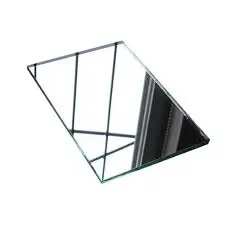

Reflective glass material has emerged as a significant innovation in the field of architecture and design, transforming the way buildings interact with their environment. This specialized type of glass is known for its ability to reflect light, enhancing both the aesthetic appeal and energy efficiency of modern structures.
One of the primary advantages of reflective glass is its capacity to minimize solar heat gain. In hot climates, buildings equipped with reflective glass can significantly reduce the need for air conditioning, leading to lower energy costs and enhanced occupant comfort. By reflecting a substantial portion of the sun's rays, reflective glass prevents excessive heat from entering the interior spaces, allowing natural light to filter through without the accompanying heat. This quality not only contributes to sustainability efforts but also aligns with the growing demand for eco-friendly building practices.
Aesthetic appeal is another hallmark of reflective glass material. The sleek, shiny surfaces can create striking visuals, often giving buildings a modern and sophisticated look. Cities around the world have embraced this trend, utilizing reflective glass in skyscrapers and commercial buildings, which can create stunning reflections of the sky and surrounding landscapes. This visual effect can make urban environments more dynamic and engaging, blurring the boundaries between constructed spaces and nature.

Additionally, reflective glass offers practical benefits, such as improved privacy. As the material reflects the outside world, it becomes challenging for passersby to see into interior spaces during the day. This characteristic is particularly valuable for residential buildings and offices, where privacy is often a concern. Furthermore, reflective glass can also enhance security, making it more difficult for outsiders to discern valuable items within.
Despite its many benefits, the use of reflective glass material is not without challenges. In areas with high pedestrian traffic, reflective surfaces can sometimes cause glare, potentially impacting the comfort of people nearby. Architects and designers must therefore carefully consider the positioning and density of reflective glass in their plans to minimize any adverse effects.
In conclusion, reflective glass material serves as a versatile and innovative choice for contemporary architecture. Its ability to combine energy efficiency, aesthetic appeal, and practical benefits makes it a preferred option for modern buildings. As technology advances and sustainability remains a priority, the role of reflective glass in shaping our built environment will surely continue to grow.